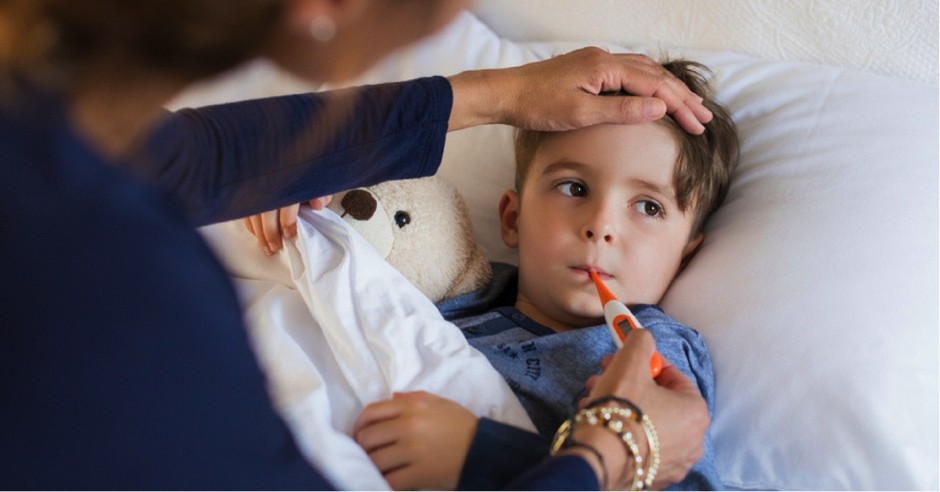
A Parent’s Guide to Understanding and Managing Children’s Fever
Fever in children is a common concern for parents, often sparking worry and uncertainty. While a fever itself is not an illness but rather a symptom of an underlying condition, it can be distressing to witness in your child. Understanding the causes, knowing how to measure and manage a fever, and recognizing when to seek medical attention are crucial aspects of parenting.
In this comprehensive guide, we will delve into the world of children’s fever, addressing common questions, and providing parents with the knowledge needed to navigate this common childhood occurrence.
Understanding Children’s Fever
What is a fever in children, and what causes it?
A fever is a temporary increase in body temperature, usually in response to an infection or illness. Common causes include viral or bacterial infections, teething, immunizations, and environmental factors.
At what temperature is considered a fever in children?
A rectal temperature of 38°C or higher is generally considered a fever in children. However, the definition of a fever may vary depending on the method of measurement (oral, ear, forehead, or rectal).
Measuring and Monitoring Fever
How should parents measure a child’s temperature?
Rectal temperatures provide the most accurate readings in young children. Oral, ear, and forehead thermometers are also common, but each method has its considerations. Follow the manufacturer’s instructions for accurate readings.
What is a normal body temperature range for children?
Normal body temperature can vary, but it typically falls between 36.1°C and 37.2°C. It’s essential for parents to know their child’s baseline temperature when assessing for fever.
Common Concerns about Children’s Fever
Is a fever dangerous for children?
In most cases, a fever itself is not dangerous but rather a natural response to an infection. However, high fevers or those lasting more than a few days may require medical attention.
Can a fever cause seizures in children?
Febrile seizures can occur in some children during a rapid rise in temperature. While frightening, they are typically brief and not associated with long-term effects. Seek medical advice if your child experiences a febrile seizure.
FAQs About Children’s Fever
When should parents seek medical attention for a child’s fever?
Seek medical attention if a fever is persistent, associated with other concerning symptoms, or if your child is an infant under three months old. Emergency medical attention is warranted for high fevers or signs of dehydration.
How can parents manage a child’s fever at home?
Focus on keeping the child comfortable by providing fluids, maintaining a comfortable room temperature, and using age-appropriate fever-reducing medications as directed by a healthcare professional.
Should parents wake a sleeping child to administer fever-reducing medication?
It is generally not necessary to wake a sleeping child to administer medication unless advised by a healthcare professional. Sleep is important for the body’s healing process.
Is a lukewarm bath effective in reducing fever?
A lukewarm bath or sponge bath can help cool the body and reduce fever. Avoid using cold water, as it can cause shivering, which may increase body temperature.
Can teething cause a fever in infants?
Teething itself does not typically cause a fever. However, teething may coincide with the time when infants are more susceptible to infections, which can lead to a fever.
Is it normal for a child’s fever to spike in the evening?
It is common for a child’s fever to spike in the evening. This can be due to the body’s natural circadian rhythm and is not necessarily a cause for concern.
Can fever-reducing medications interfere with the body’s natural healing process?
Fever-reducing medications help alleviate discomfort and reduce fever, but they do not interfere with the body’s ability to fight infections. They can be used judiciously under the guidance of a healthcare professional.
How can parents encourage a child to stay hydrated during a fever?
Offer small, frequent sips of clear fluids such as water, electrolyte solutions, or diluted fruit juices. Popsicles or ice chips can also be appealing.
Is it normal for a child to have a fever after vaccinations?
It is common for children to develop a mild fever after vaccinations. This is a normal response as the body builds immunity. Follow the recommended guidelines for administering fever-reducing medications if necessary.
Conclusion
Understanding and managing children’s fever is an essential aspect of parenting. While fevers are often a natural response to infections, it’s crucial for parents to be informed, monitor their child’s well-being, and seek medical attention when necessary. By addressing common questions, parents can confidently navigate the challenges of childhood fever, providing comfort and support to their little ones during these common occurrences.



